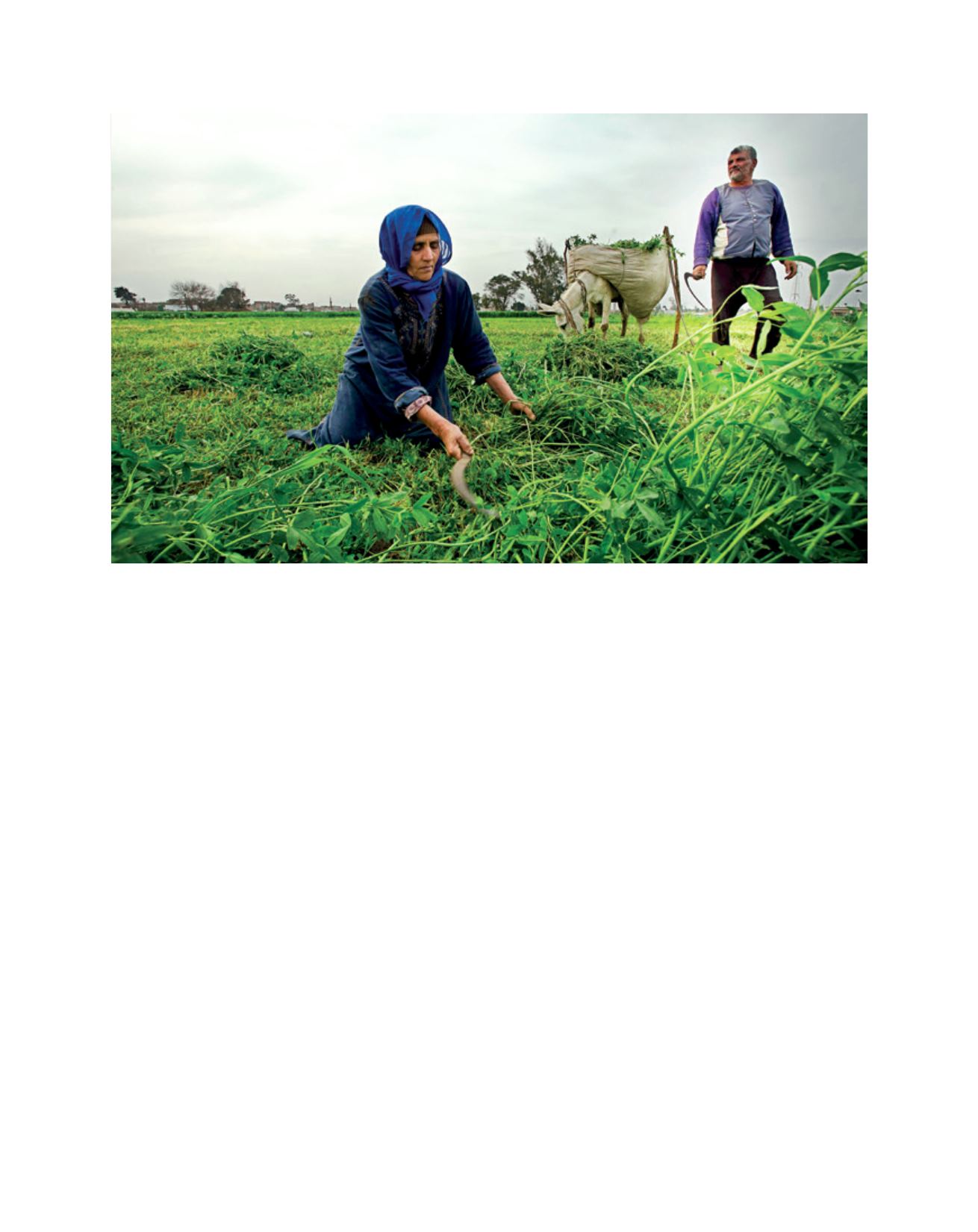

[
] 23
to enhance and defend the interests of family farming has the
knock-on effect of jeopardizing rural well-being, nutrition and
education, or rural development more broadly defined.
War, economic reform and climate change
Since the Second World War, NENA has experienced the
highest number of international wars and civil conflict of any
region in the world, at an enormous human and economic
cost. That cost has serious implications for the undermin-
ing of vibrant and ecologically self-sustaining family farming.
War and conflict slashes gross domestic product (GDP), and
destroys lives and economic infrastructure.
Sudan is a low-income food deficit country – one of the
least-developed regions. Its long civil war in the South and in
Darfur, as well as a range of other persistent conflicts, have
lasting consequences that impact family farming and pasto-
ralism. Displacement of farmers, for example, has disrupted
farming and agropastoralism in Blue Nile and South Kordofan,
where more than 500,000 are food insecure.
Following the first Gulf War in 1990, Iraq lost two-thirds
of its GDP and the ensuing sanctions campaign took the
lives of 1.5 million including 500,000 children.
11
Sanctions
and war dramatically affected family farming, already under-
mined by Iraq’s dependence upon oil that accounts for up
to 60 per cent of the country’s GDP. Iraq had been a ‘bread
basket’, but by 1990 it imported 70 per cent of its cereals,
legumes, oils and sugar.
12
Disease, death and malnutrition
accelerated after the international sanctions regime that
followed Saddam’s 1990 invasion of Kuwait. This continued
during the ‘oil for food’ programme.
The Iraq war and internal violence that followed
US-led intervention crippled Iraq’s family farming sector,
further restricting agricultural production and marketing.
Reconstruction has focused on the oil sector and regional
spoils rather than investment in family farming.
In Syria the devastating civil war and outside intervention has
reduced the majority of people to hunger and starvation. And
conflict has been central to the history of Yemen, where almost
half of the 20 million population is food insecure. Conflict in
Yemen has continued since unification and the 2011 uprisings
for political liberalization and democratization.
The Occupied Palestinian Territories (OPTs) have been
the theatre of conflict, disruption and dislocation, and
violent dispossession of farmers, herders and agropastoral-
ists, with the result that small farmer agriculture in the OPTs
is the most undermined in the region. The conflicts in Gaza
in 2008-2009, 2012 and 2014 caused dramatic constraints
on family farming. For instance, according to the Food and
Agriculture Organization (FAO) in 2008-2009, “almost all of
Gaza’s 10,000 smallholder farms suffered damage and many
[were] completely destroyed, having a severe impact on liveli-
hoods,”
13
and in 2012 alone, there was a “twofold increase in
the destruction of agricultural assets, such as olive and fruit
trees and cisterns – and with it lost income.”
14
Palestinians are
also a microcosm of the region’s predominantly young popula-
tion. Almost 65 per cent of Palestinians are less than 24 years
old and in the NENA region as a whole there are more than
100 million between the ages of 15 and 29. With regionally
declining population growth rates the young offer a strong and
important ‘demographic dividend’.
15
A predominantly young
Haji Bakri Mohammed and his mother cultivate their land
Image: Abdelkader Eisayed
R
egional
P
erspectives
















